


April 28, 2021
Samantha Cano Zamora lies in a black trash bag on the modest brick plaza in front of the city hall of Ixtapaluca, Mexico, 21 miles east of Mexico City. Eight other trash bags, each with a woman inside, surround her.
“Help! Get me out of here!” she begins to yell.
Two other women, wearing masks, begin to drop flowers around the plaza. Finally, Cano Zamora emerges, holding a photograph of a woman who had been murdered in Ixtapaluca and left dead in a trash bag, and begins to read her story aloud to the audience.
No Somos Basura (We Are Not Trash) was the first event of the performance series Paren de Matarnos (Stop Killing Us), organized by the feminist collective Mujeres de la Periferia Para la Periferia (Women from the Periphery for the Periphery, or MPPP). MPPP partnered with collectives in four other municipalities for the performance series, which took place at the end of 2020 as a response to the shadow pandemic—the convergence of COVID-19 and gender violence—ravaging the outskirts of Mexico City.
The 59 municipalities known as “the periphery” make up a sprawling landscape of hand-built cinderblock-and-rebar houses that are something between slums and suburbs relative to Mexico City. While all of Mexico experienced the shadow pandemic, the periphery quickly became its epicenter. At the same time that dense living conditions, unequal access to health care, and shortages of personal protective equipment and oxygen left thousands dead, quarantine increased many women’s and children’s vulnerability to domestic violence. During 2020, feminicide—which is defined in Mexican law as murder in which gender is a motivation—increased 18.6 percent in the State of Mexico, in whose eastern lobe the municipalities of the periphery are located.
![]()
The members of MPPP felt a need to take action. “It wasn’t the right time to go out into the streets and protest,” says member Carolina Aguilar Navarrete, “but we had to.”
But when feminists in the periphery tried the direct-action tactics utilized by Mexico City activists, they were met with violent state repression. They had to invent a new means of raising their voices, for a context in which traditional forms of resistance were impossible.
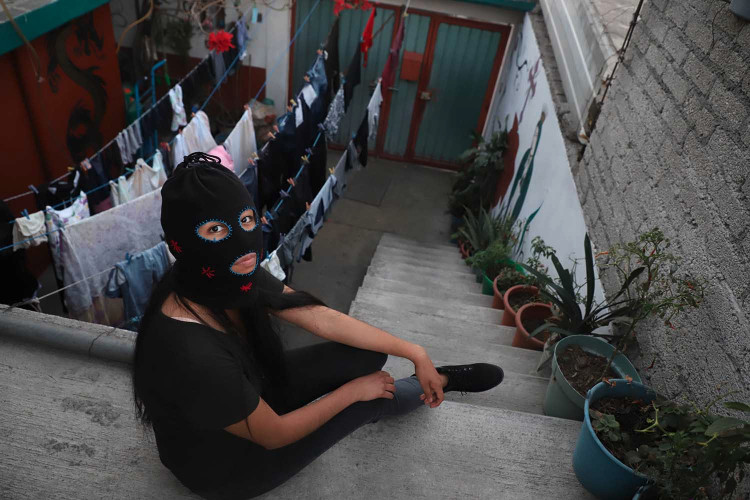
CREDIT: Gabriela Esquivel for Stanley Center
“When people found out I was from Ecatepec, they treated me like I was from Iraq,” says Fany Morales. “Looking back, I do feel like I grew up in a war zone, I was surrounded by so much violence.”
Since 2006, murders of women and girls in the periphery have given the State of Mexico the country’s highest rate of feminicide. Ecatepec—the city of 2 million where Aguilar Navarrete and Morales grew up—became particularly notorious for extreme gender violence. “It was the new Juárez,” says Morales.
Aguilar Navarrete and Morales survived kidnappings in their own neighborhoods. Morales was beaten and left unconscious at the metro station in front of her house; Aguilar Navarrete was stopped by a van while walking to school, held at gunpoint, and let go only because as she struggled against her kidnapper, another victim tried to escape from the back of the van. Nearly every woman from the periphery has a story of violence.
![[The Periphery Resists] A t-shirt for sale at a feminist market in Ecatepec, a city notorious for extreme gender-based violence.](https://resilience.stanleycenter.org/wp-content/uploads/sites/5/2021/04/3-454.jpg)
CREDIT: Gabriela Esquivel for Stanley Center
Multiple factors contribute to the periphery’s high rates of gender violence. The State of Mexico has the highest number of people living in poverty of any state in Mexico. What work opportunities exist are largely industrial, and filled by men, leaving women with the choice of being a housewife or commuting two hours each way to Mexico City on multiple forms of public transportation.
COVID restrictions aggravated these factors. Women’s unemployment in Mexico doubled during the first three months of quarantine. Having children at home pushed women out of the workforce at the same time it increased expenses. Many were not used to navigating the internet or did not have access. And for women in situations of domestic violence, there was no easy way to leave the house or talk on the phone. Even if they found a way, many government offices were closed.
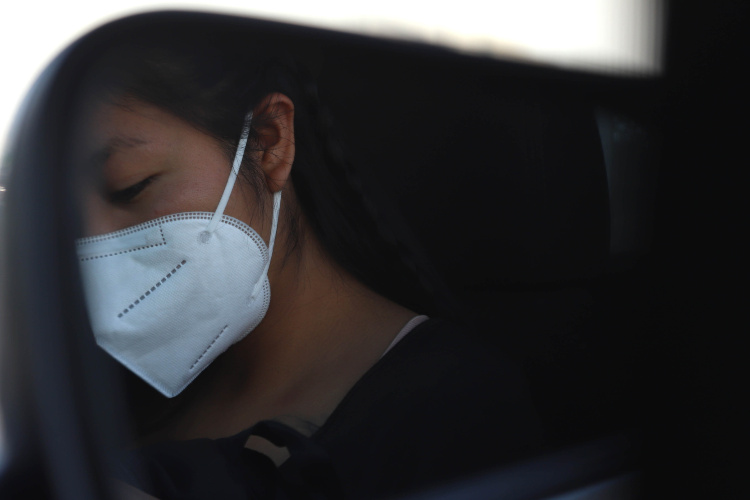
CREDIT: Gabriela Esquivel for Stanley Center
But what activists emphasize as the crux of the gender violence problem in the periphery is the way the state’s justice system grants impunity to aggressors. This is a problem across Mexico, where over 90 percent of homicides go uninvestigated, but it is even more pronounced in the State of Mexico.
“Because of the lack of a state, aggressors continue committing crimes, because nothing happens,” says Wendy Figueroa Morales, director of Mexico’s National Shelter Network. She adds that in 40 percent of feminicides, the perpetrator had already been reported to the police, but there had been no response.
Mexico’s feminist movement has grown staggeringly in the last two years, starting with the country’s iteration of the #MeToo movement in March 2019 and swelling into upstart collectives and marches that are tens of thousands strong.
Yet while women began organizing all over the country, it is images of Mexico City feminists that circle the globe though social media and the international press. For feminists in the State of Mexico, this has underscored a longstanding rift between them and their counterparts in the nearby capital. Activists in the city draw media attention but rarely come to the periphery, where many of the feminicides take place and where the state is far more repressive. Though many activists in the periphery began their feminist trajectories in Mexico City collectives, they eventually realized that they had to take a different approach.
“The girls in the city would organize things—cool things, things you wanted to go to,” says Morales. But they wouldn’t accommodate the needs of the girls from the periphery, such as scheduling them earlier in the day or hosting them in the northern part of the city. “The inequality—not even of opportunities, of lives, showed. The only thing I could do was stop going. I spent 22 years constantly going to and from Mexico City, and my feminist friends never came with me to the state.”
![[Here, I decide] Though many women in the periphery began their feminist activism in Mexico City collectives, they eventually realized that they had to take a different approach.](https://resilience.stanleycenter.org/wp-content/uploads/sites/5/2021/04/5-937.jpg)
CREDIT: Gabriela Esquivel for Stanley Center
A clear indication of this divide came in early fall. On September 3, 2020, Mexico City feminists staged a takeover of the offices of the country’s Human Rights Commission, protesting the agency’s lack of follow-through on victims’ cases. A small group is still occupying the building, operating it as a shelter for victims of violence.
In solidarity, activists in Ecatepec took over the Codhem—the agency’s local branch office—on September 10. Around midnight, police broke down the door, shouting, “Ya valieron verga” (This is fucking over). They forcefully removed the activists, putting them into unmarked white vans and beating them.
“They said, ‘This isn’t Mexico City, you’re not going to get away with this,’” says Madga Soberanes, a member of MPPP who was also part of the Codhem occupation. As they drove, the police told the activists they were taking them to Toluca, the capital of the State of Mexico, 70 miles from Ecatepec. But on the outskirts of the city, the vans’ course diverted.
“I was thinking they were going to make us disappear,” says Kika Flores, who operates a shelter for child victims of sexual abuse and who was eight months pregnant at the time. “We were all thinking it.” But others had uploaded the videos from their cell phones to Facebook and shared their locations with family members and friends. Once the police realized this, the trucks began heading for the state prosecutor’s office in Atizapan, an hour north of Toluca.
By the time they arrived, Flores was so badly beaten that she was leaking amniotic fluid. Others called an ambulance, but when it arrived, the police wouldn’t let her go to the hospital. Instead, they put the women in holding cells, after confiscating their cell phones. Family members and journalists waiting in the parking lot were also beaten. When the women were finally released the following morning, they were charged with occupying a building.
“For a peaceful protest, that was within our constitutional rights,” says Flores, who had an emergency Cesarean section the following day. Seven months later, the women’s files have still not been closed, nor have they been notified of any progress in the cases.
“It’s a message from the authorities—if you try anything, this is what we’ll do,” says Aguilar.
“For our own security we’ve had to find other ways to express ourselves—art, performances, songs, and other types of activism,” says Luna, an activist from the collective Libertad Morada in Ixtapaluca.
![[Let’s force. Let’s exist. Let’s resist.] Fearing further violence from police, activists in the periphery have turned to other forms of protest including art and performances.](https://resilience.stanleycenter.org/wp-content/uploads/sites/5/2021/04/6-800-v2.jpg)
CREDIT: Gabriela Esquivel for Stanley Center
In addition to MPPP’s performance series, feminist collectives in the State of Mexico have organized feminist activism through poetry, murals, and group bike rides—a response to dangerous public transportation. Accompanying families of victims is also a significant part of their work. MPPP, for instance, often connects with families, does a memorial performance, accompanies them to hearings, and helps them get in touch with lawyers and other resources.
This approach has created a form of feminist activism with priorities distinct from that of Mexico City, which in the past year has factionalized along lines of inclusion of trans women and “liberal” versus “radical” debates.
“In the State of Mexico the movement is less theoretical,” says Estefanía Camacho, a journalist from the state. “The women are marked by class, and they never forget that the issue of feminicide is the core of their work.” The movement’s activities are more inclusive of young girls. And while the challenge of transportation means there are many small collectives, they maintain an active sense of being one another’s allies. “Periferia Unida” (periphery united) is a common slogan, along with, “The women of the periphery exist because we resist.”
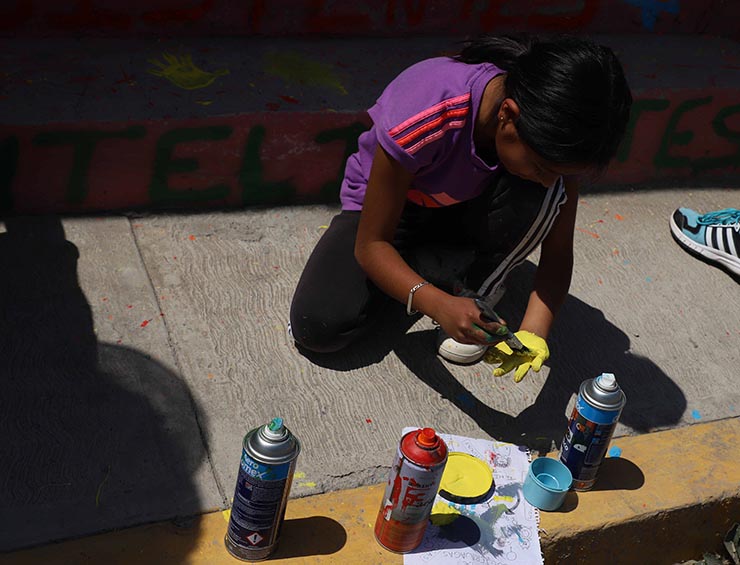
CREDIT: Gabriela Esquivel for Stanley Center
MPPP’s performance series began after it contacted the family of Sherlyn Mariel Peréz Carabarin, a 17-year-old who was murdered in July 2020 after her ex-boyfriend climbed a tree to enter her house and shot her twice in the head as punishment for not wanting to get back together with him. The performance culminated in turning the tree into an altar in Sherlyn’s honor and wrapping it with yellow caution tape that had served as a prop in the performance, as well as flowers and messages such as “until we have justice” and “Sherlyn lives.”
“Doing performance—putting yourself in a plastic bag and yelling for help, a thousand things go through your head,” says Cano Zamora, the activist who partnered with MPPP in the performance No Somos Basura. “You find strength in yourself. Performance is another way to say, ‘We’re here resisting and taking up space, and our protest is legitimate.’”
But even this artistic activism is threatened by the state. At the final performance of the series, in front of the municipal palace of Tlalnepantla de Baz, police officers approached the women, telling them this wasn’t the place to bring their grievances and talking into their radios in an attempt to intimidate them.
“I asked them, ‘If this isn’t the way, what is?’” says Aguilar Navarrete. “I said, ‘We’re protesting, we’re not being destructive, we’re not doing graffiti, we’re here because Tlalnepantla has a high number of feminicides.’ But eventually I realized that we were only four women and that we were in danger, so we moved.”
In the context of a state that condones and authorizes gender violence, the odds are against State of Mexico feminists. But while the interventions attract small audiences, they have an effect. “People would stay to watch and listen, and you could tell that there was a moment when something clicked,” says Aguilar Navarrete. At some of the performances, family members of feminicide victims approached the activists to ask for help with their cases or to see if they could collaborate with the collective in some way.
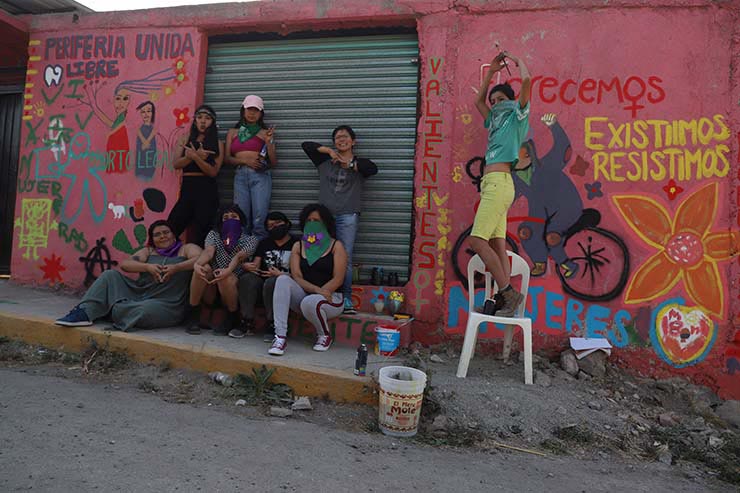
CREDIT: Gabriela Esquivel for Stanley Center
“Maybe we don’t have resources, but we have a voice and a body,” says Cano Zamora. “To show that the feminist fight is also present here, in the periphery, in the municipalities that we come from.”
All images by Gabriela Esquivel for Stanley Center.
This article is also available in Spanish.
Caroline Tracey discusses her reporting about violence against women in Mexico on the Global Dispatches Podcast with Mark Leon Goldberg (July 22, 2021). Listen to the episode:
Caroline Tracey is a writer and geographer originally from Colorado, USA and currently living in Mexico City. Her writing appears in n+1, SFMOMA’s Open Space, the Guardian, and in Spanish in Nexos. She was recently awarded a Women’s Studies Award from the Institute for Citizens and Scholars and a Mellon/ACLS Dissertation Completion Fellowship for her PhD dissertation about women and transgender deportees and return migrants in Mexico City.
cetracey.com
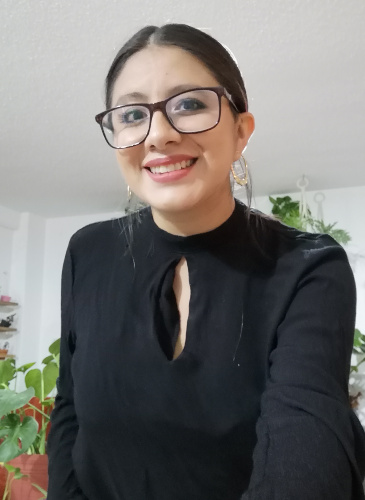
Gabriela Esquivel is a Mexican photojournalist. She was born in 1989 and graduated with a degree in journalism. With 10 years of experience, she has written about social issues such as same-sex parented families, terminal patients, football for the blind, clandestine graves, forced disappearances, feminism, and recently the COVID-19 pandemic. Her work on forced disappearances has been shown in Colombia, Peru, and Paris. She has twice been showcased at the Galería Abierta de las Rejas de Chapultepec in Mexico City, in a collective exhibition called “Desde Nosotras” (From Us Women). For the last four years, she has been a staff photographer for the newspaper 24 Horas.
COVID-19’s Impact on Atrocity Risks